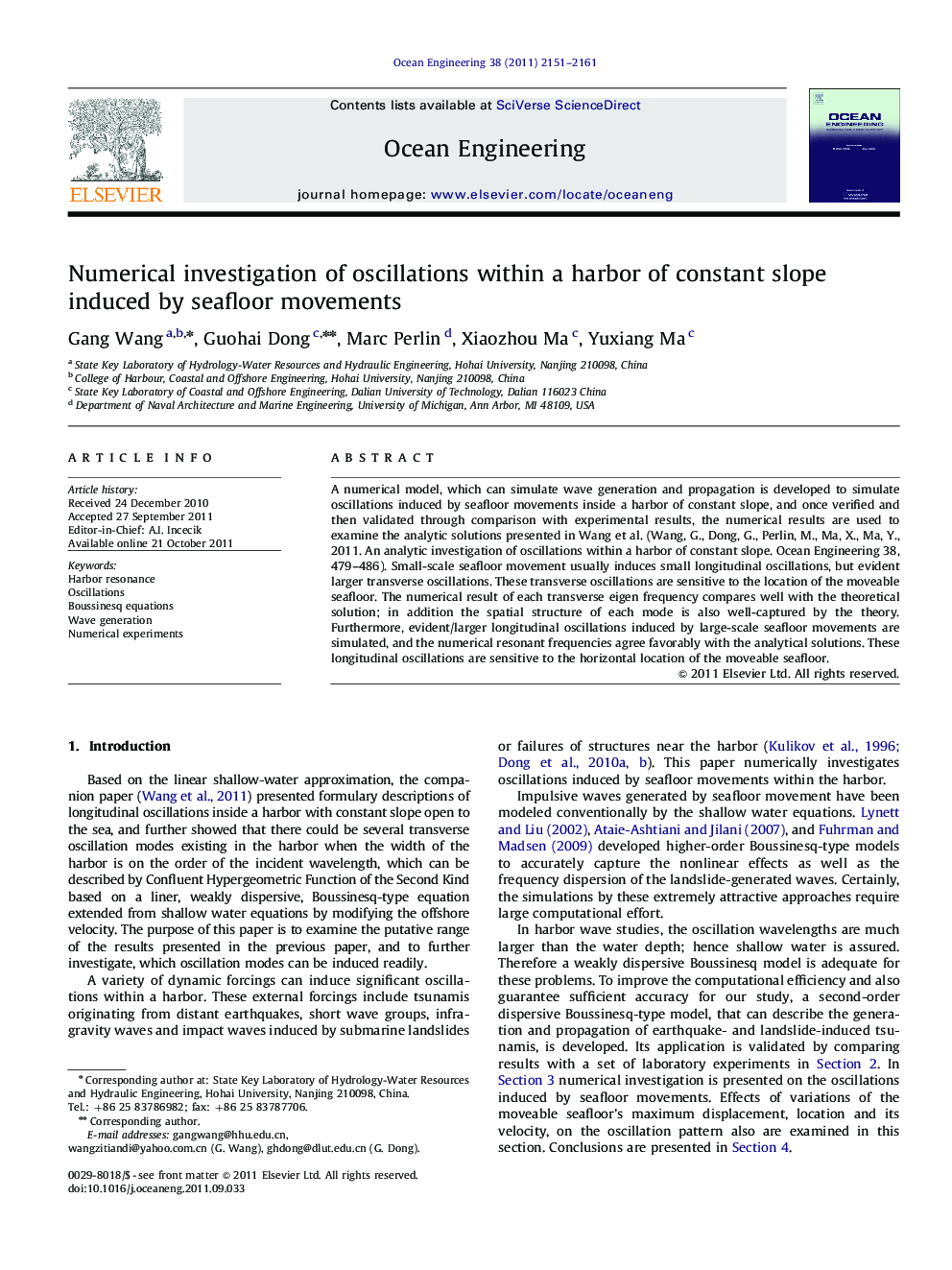| Article ID | Journal | Published Year | Pages | File Type |
|---|---|---|---|---|
| 1726377 | Ocean Engineering | 2011 | 11 Pages |
A numerical model, which can simulate wave generation and propagation is developed to simulate oscillations induced by seafloor movements inside a harbor of constant slope, and once verified and then validated through comparison with experimental results, the numerical results are used to examine the analytic solutions presented in Wang et al. (Wang, G., Dong, G., Perlin, M., Ma, X., Ma, Y., 2011. An analytic investigation of oscillations within a harbor of constant slope. Ocean Engineering 38, 479–486). Small-scale seafloor movement usually induces small longitudinal oscillations, but evident larger transverse oscillations. These transverse oscillations are sensitive to the location of the moveable seafloor. The numerical result of each transverse eigen frequency compares well with the theoretical solution; in addition the spatial structure of each mode is also well-captured by the theory. Furthermore, evident/larger longitudinal oscillations induced by large-scale seafloor movements are simulated, and the numerical resonant frequencies agree favorably with the analytical solutions. These longitudinal oscillations are sensitive to the horizontal location of the moveable seafloor.
► A numerical model simulating wave generation and propagation is developed. ► It is used to simulate oscillations induced by seafloor movements. ► The results are used to examine the fidelity of the analytic solutions. ► Oscillation patterns are sensitive to the location of the moveable seafloor. ► The amplitude of each mode is affected by seafloor's velocity or its displacement.
